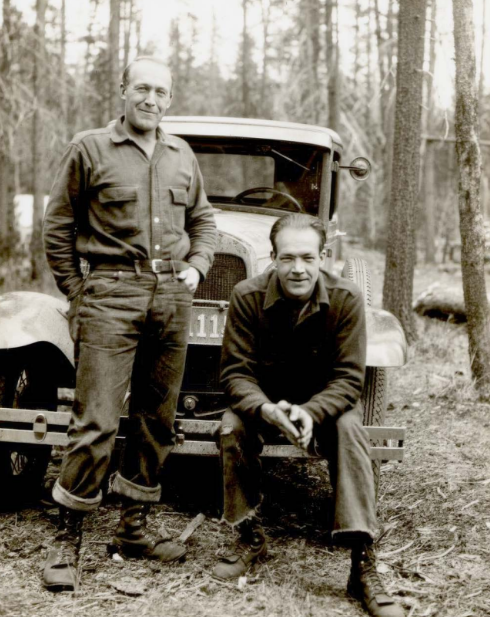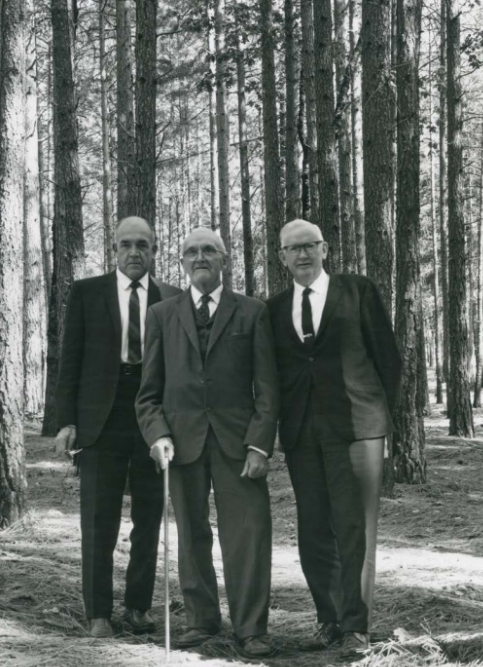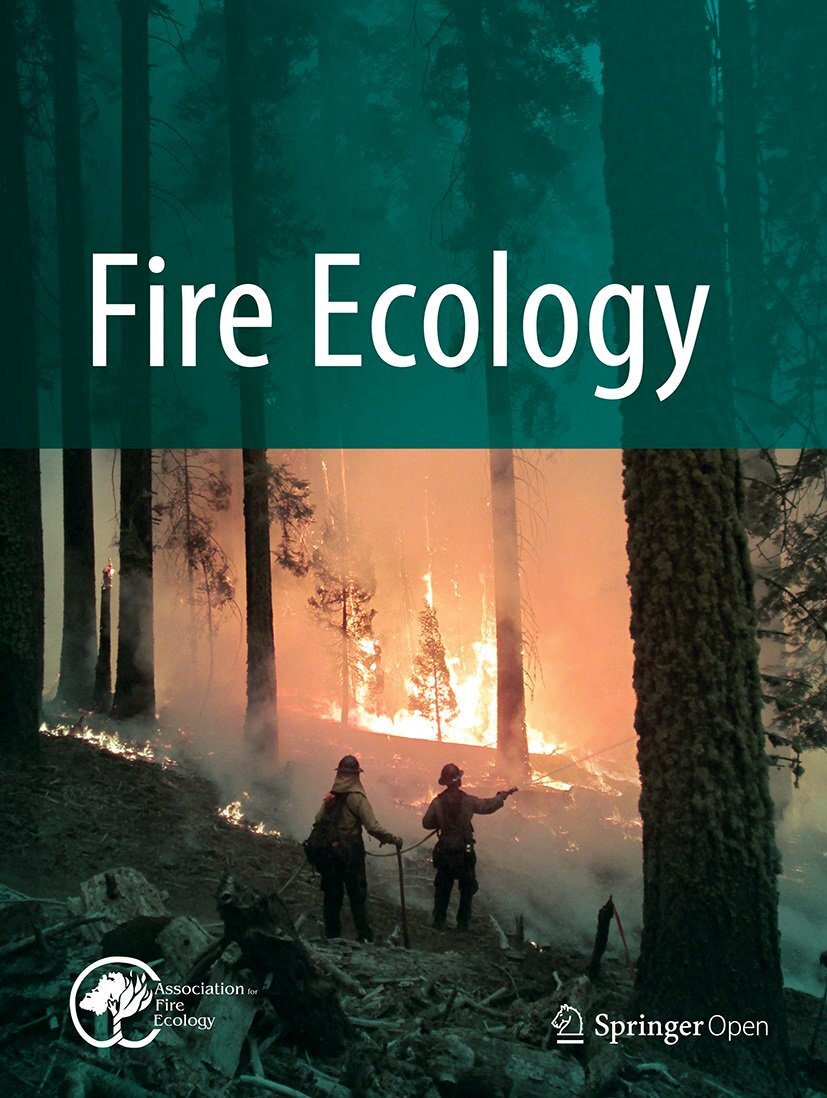In Memoriam
Harold Weaver
Harold A. Weaver was a prominent fire ecologist who mainly worked in the Pacific Northwest, where he was raised. Weaver grew up in Sumpter, Oregon and later earned a forestry degree from Oregon State College in 1928 (now Oregon State University). During summer breaks while earning his degree, Weaver worked as a part-time forest surveyor in Oregon and California. He was inducted into Oregon State’s Forestry Honors Society and, after graduating, soon became a forester with the Klamath Division of the Branch of Forestry of the Indian Service.
Harold Weaver (right) with Paul Keen. Photo credit: Forest History Society
The Branch of Forestry of the Indian Service was established in 1910 to manage timber resources on tribal lands. The Branch of Forestry placed an emphasis on fire suppression. Initially, Weaver adhered to the broad government policies regarding forest conservation and wildfire prevention. However, his views evolved as engaged more and more with local woodsmen who had deep, practical knowledge of the land he was working on with the Klamath Division. In the early 1930s, Weaver began collaborating with Frederick Paul Keen, an entomologist who was researching the essential role fire plays in maintaining forest health through thinning stands and reducing the risk of catastrophic wildfires. As Weaver and Keen worked together, Weaver began to further understand the importance of low-intensity fires for moderating fuel loads and promoting the health and regeneration of fire-dependent species. In his work with the Civilian Conservation Corps in the 1930s, Weaver explored using fire to control bark beetle infestations.
Harold Weaver (left), Herbert Stoddard (center), and Harold Biswell (right) at the 1967 Tall Timbers Conference. Photo credit: Forest History Society
Weaver notably used photography in his contributions to the field of fire ecology. He had decades-long photography projects which captured long-term ecological changes in forests which had experienced low-intensity fires. Weaver created reports with the direct visual evidence in photographs, alongside detailed field notes, to use as tools to convince skeptics of the ecological benefits of fire. By the 1950s, Weaver began collaborating with Dr. Harold Biswell, who found Weaver’s photographs to be invaluable evidence for supporting his research on fire ecology. They were both influential voices, particularly in the context of the Tall Timbers Research Station’s fire ecology conferences, which began in the 1960s.
In various administrative roles at the Bureau of Indian Affairs (BIA), Weaver continued to advocate for comprehensive understandings of forest management by including perspectives from Native American landowners and other private landowners because of their relationships with fire. His “Weaver Reports” called attention to inefficiencies and staffing shortages in the BIA’s forestry division. Weaver retired in 1967, but his legacy continues to influence the field of fire ecology. Weaver’s photo essays and field surveys have been preserved in several archives, including the Forest History Society and the Bancroft Library. His photographic documentation inspired land managers, scientists, and foresters to reconsider the role of fire in forests. Weaver understood the importance of fire in forest ecosystems, and his approach to fire ecology as both a scientific study and a practical management tool has been influential in the field of fire ecology.
Selected Papers and books
“Fire as an Ecological and Silvicultural Factor in the Ponderosa Pine Region of the Pacific Slope” (1943, with Arthur A. Brown)
“Some Effects of Prescribed Burning on the Coyote Creek Test Area Colville Indian Reservation” (1967)
Resources
The tribute above was written based on information found in the following sources. If you would like to include additional information, papers or books, personal quotes, or photos please email communications@fireecology.net.
Introduction to H. Weaver’s Article (Jan W. van Wagtendonk; Fire Ecology Journal)
Fire and Its Relationship to Ponderosa Pine (Harold Weaver; 7th Tall Timbers Fire Ecology Conference)
Photography and Early Fire Ecology (Jameson Karns and Michelle M. Steen-Adams; Forest History Society)
Squaring the Triangle: Fire at San Carlos (Stephen Pyne)
Fire and Management Problems in Ponderosa Pine (Harold Weaver; 3rd Tall Timbers Fire Ecology Conference)
Community and Fire Ecologists, Park Biologists, and Recreation Scientists: The Antecedents of Wilderness Science (David N. Cole; International Journal of Wilderness)
“Slow Awakening: Ecology’s Role in Shaping Forest Fire Policy” (Forest History Society)
Sustainability and Wildland Fire: The Origins of Forest Service Wildland Fire Research (Diane M. Smith; USFS)



